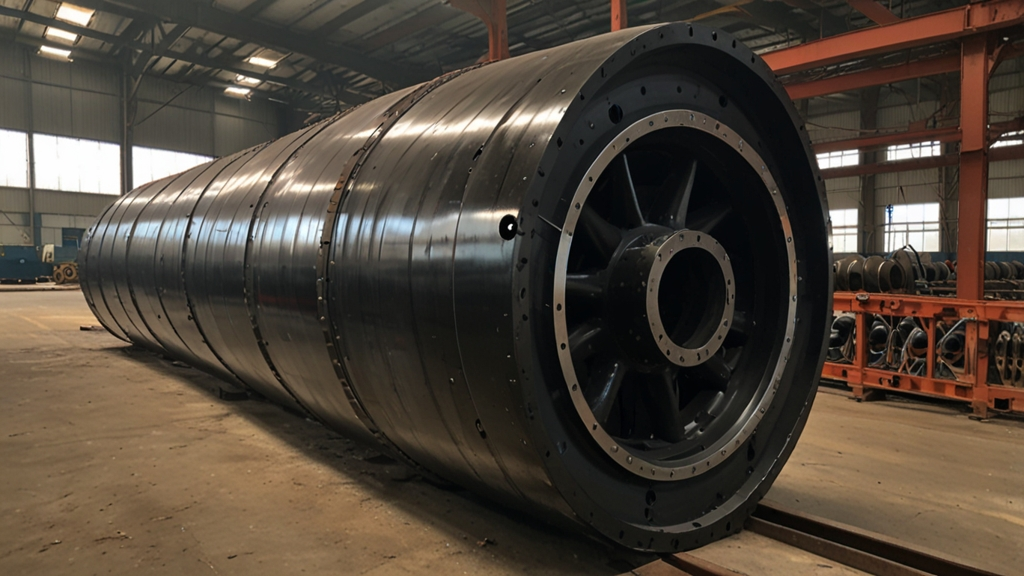The 1035r hydrolic line for sterring is critical to modern machinery because it delivers precise steering functionality. The 1035R hydraulic line guide presents an inclusive review of this essential part, including machinery explanations, enhanced recommendations, and frequently asked questions.
What is the 1035r hydrolic line for sterring?
The 1035r hydrolic line for sterring is a key component that steers machines through hydraulic transmission.
Motor equipment like tractors, loaders, and other heavy machines rely on a 1035r hydrolic line for sterring to transport hydraulic fluid for sharp, accurate steering control. The system performs reliably under high-pressure situations because it maintains efficient operation.
The 1035r hydrolic line for sterring incorporates fundamental components that make it vital for steering operations.
Key Features of the 1035r hydrolic line for sterring
Durability: The 1035R hydraulic line comprises high-grade materials that enable extended durability against everyday wear and tear.
Flexibility: The design structure enables fast installation while maintaining compatibility with diverse machine types.
Leak Resistance: This component features designed leak prevention to deliver reliable operation.
High-Pressure Capability: Controls the extreme pressure requirements of steering systems effectively.
Importance of the 1035r hydrolic line for sterring
The hydraulic line controls the steering systems’ performance through proper functionality. The 1035r hydrolic line for sterring contributes to the following:
Safety: Reliable steering enhances operator safety.
Performance: Reliable operation with reduced downtime becomes possible through this installation.
Longevity: Hydraulic system integrity and reliability are preserved through its protective measures for other hydraulic system components.
Installation Process for the 1035r hydrolic line for sterring
Follow these steps for proper installation:
Preparation: First, ensure you obtain all required installation tools, then verify that the 1035R hydraulic line matches your equipment requirements.
Inspection: Check the hydraulic line for any surface problems visible.
Connection: The installation begins by adequately connecting the line to the specified ports while ensuring it fits safely.
Testing: Check that the machinery operates correctly by running it and confirm there are no leaks.
Common Issues with the 1035r hydrolic line for sterring
Leaks: Broken hydraulic seals, as well as unsecured connections, frequently trigger this issue.
Blockages: A debris buildup blocks fluid’s regular movement through tubes.
Wear and Tear: The hydraulic line ages and deteriorates with continuous machine operation.
Maintenance Tips for the 1035r hydrolic line for sterring
To ensure the longevity and efficiency of your 1035r hydrolic line for sterring, follow these maintenance practices:
Regular Inspections: Both proof, leakage, and injury must be checked for regular inspection.
Cleanliness: Hydraulic system efficiency depends on continuous cleanliness to prevent operational blockages.
Timely Replacements: Replace worn-out components promptly.
Use Recommended Fluids: Only hydraulic fluid, which the manufacturer recommends for this design, is used.
Advantages of Using the 1035r hydrolic line for sterring
Improved Control: The system improves steering accuracy, which leads to better control of your machine.
Cost-Effectiveness: Durable construction reduces replacement costs.
Versatility: Suitable for various types of machinery.
How to Choose the Right 1035r hydrolic line for sterring
Consider these factors when selecting a hydraulic line:
Compatibility: Your choice of hydraulic line needs to match the exact dimensions of your equipment system.
Pressure Rating: Steering system pressure requirements can be confirmed before selecting.
Material Quality: High-quality, durable materials should be your choice when selecting your lines.
Manufacturer Reputation: Choose products from reputable manufacturers.
Troubleshooting Common Problems
Problem: Reduced steering efficiency.
Solution: Players should examine the hydraulic fluid amount while inspecting the line for fluid leaks and obstructions.
Problem: Unusual noises during operation.
Solution: Check the integrity and fitment of the hydraulic line by inspecting its characteristics.
Problem: Frequent leaks.
Solution: Informative Maintenance Step One Features Seal Replacement For Damages While Step Two Demands Connection Tightness Adjustments.
Future Trends in Hydraulic Line Technology
Recent technological developments drive continuous improvements in the performance of hydraulic lines. For the 1035r hydrolic line for sterring, expect:
Enhanced Materials: Greater durability and resistance to extreme conditions.
Eco-Friendly Options: Development of lines compatible with biodegradable fluids.
Intelligent Systems: Integration with sensors for real-time performance monitoring.\
Conclusion
A steerable 1035R hydraulic line is an essential system component that provides essential support for machine operations safety. Knowing all features, proper installation steps, and maintenance protocols helps you achieve durable and dependable hydraulic systems.
Regular equipment inspections combined with the following recommended practices enable you to maximize the utility of this vital equipment element. The primary role of the 1035R hydraulic line is to provide steering with fluid transmission. The 1035R hydraulic line carries fluid pressure while helping machinery achieve precise steering movements.
FAQs
My 1035R hydraulic line requires regular physical checks at what interval?
Every three months should include inspections to detect system wear and tear early.
What factors lead to leakages within 1035R hydraulic lines?
Leafing occurs because of worn seals or incorrect installation.
Is installing a 1035R hydraulic line something I can do by myself?
Professional installation yields better performance, yet the general public can perform the installation with the right tools and directions.
Which hydraulic fluid do I need to choose for my equipment?
Your equipment manufacturer should determine which hydraulic fluid to use.
Typically, hydraulic lines used in 1035R systems will operate for multiple years with proper maintenance. Proper care helps extend the lifespan of these lines, while usage areas affect their expected durability.

